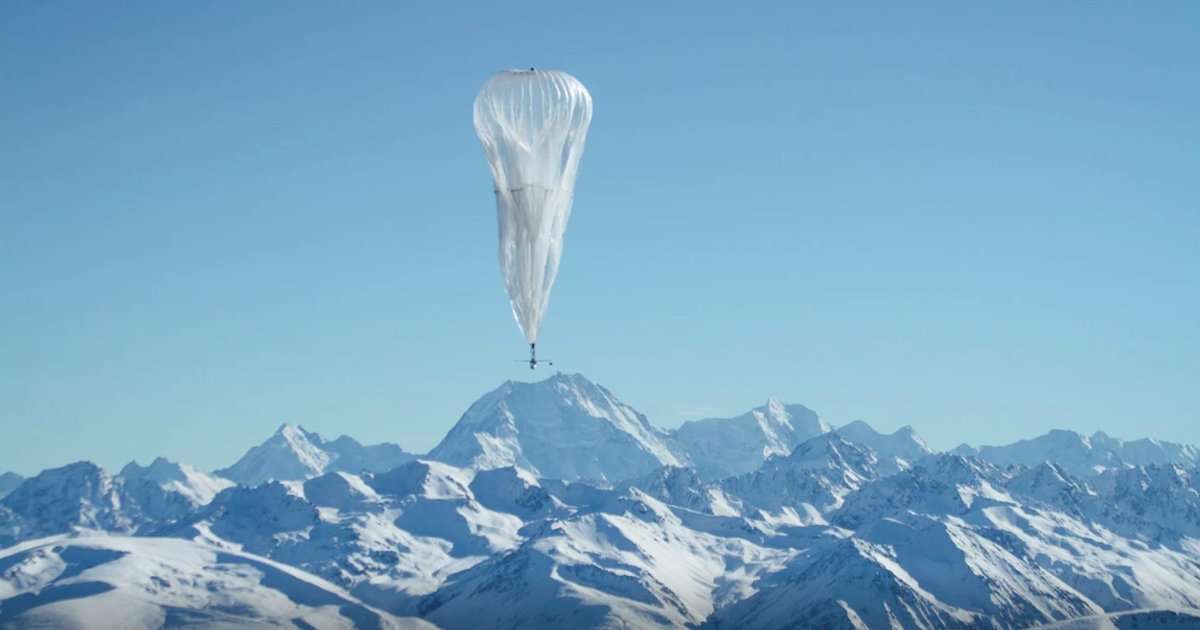During natural disasters, the ability to communicate with loved ones and get basic information is vital. But communication infrastructure is often one of the first things to be knocked out by high winds, massive rain, and flooding — especially in remote and rural regions.
Massive jellyfish-like balloons traveling at the edge of space, however, are making that problem a thing of the past.
Over the past two months, Peruvians affected by extreme rain and severe flooding since January have had basic internet access, thanks to Project Loon, an initiative from Google's parent company Alphabet to bring internet to developing nations.
The efforts in Peru show that Project Loon could be a model for relief during future natural disasters, with the potential to increase connectivity and communication when it's needed most.
A map of Peru's flooding, and the areas where Project Loon is active in the region. Image: Alphabet / Project Loon
Hundreds of thousands of people have been displaced by heavy rains in Peru over the past several months, and the Peruvian government has declared a state of emergency in more than 800 provinces in the country.
"Loon balloons float 20 km up in the stratosphere, and so have the potential to extend connectivity to where it's needed regardless of what's happening below."
X — Alphabet's research division for "moonshot technologies" to make the world a better place — has used Project Loon to connect tens of thousands of Peruvians in flooded regions around Lima, Chimbote, and Piura. Project Loon head Alastair Westgarth announced the success of the effort in a blog post on Wednesday.
"Loon balloons float 20 km up in the stratosphere, and so have the potential to extend connectivity to where it's needed regardless of what's happening below," Westgarth wrote. "We've been flying balloons over Latin America and running connectivity tests with our telecommunications partner Telefonica in Peru for the last few months. So when we saw what was happening, we reached out to Telefonica and the government to see how we could help."
High-speed internet is transmitted up to these balloons, which float twice as high as airplanes and above weather, from a telecommunications partner on the ground. In the case of the Peru floods, this partner was Telefonica. The transmission is then sprinkled back down, giving users on the ground access to reliable internet on their phones in emergency situations.
"More than 160 GB of data has been sent to people over a combined area of 40,000 square kilometers — that's roughly the size of Switzerland, and enough data to send and receive around 30 million WhatsApp messages, or 2 million emails," Westgarth wrote.
About 57 percent of the world's population — or 4.2 billion people — still live without internet access, especially those living in remote and rural regions. Connectivity during disasters like the flooding in Peru is essential, helping citizens reach loved ones and medical aid. Relief workers also benefit from the balloon-powered internet access, which enables them to better communicate with each other to distribute aid more effectively.
The ongoing success of the project in Peru highlights how the use of X's balloons could revolutionize the future of disaster relief.
Other tech companies are experimenting with similar efforts, like Facebook's Aquila drone program, to connect the developing world. Google announced earlier this year that it would be abandoning its Titan project, which was working to develop internet-connected drones.

BuddingNation on May 23rd, 2017 at 12:52 UTC »
A popup window with a video, and another asking for my email address within 5 seconds of clicking reminded me of why I no longer visit Mashable.
NonOffensiveGuy on May 23rd, 2017 at 12:21 UTC »
Re-defining "The Cloud"..
theraidparade on May 23rd, 2017 at 12:10 UTC »
Balloon-powered internet? Still more reliable than Comcast.